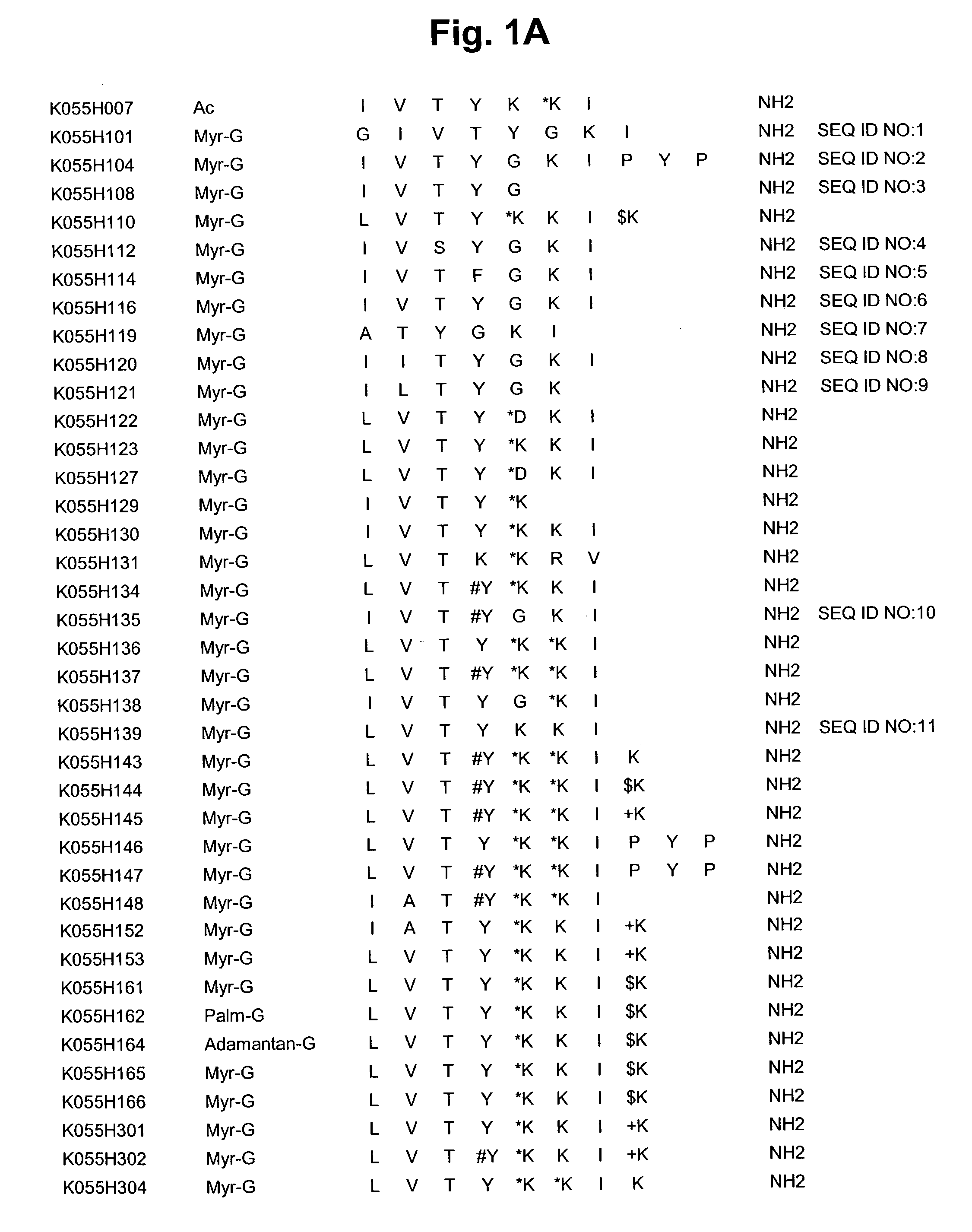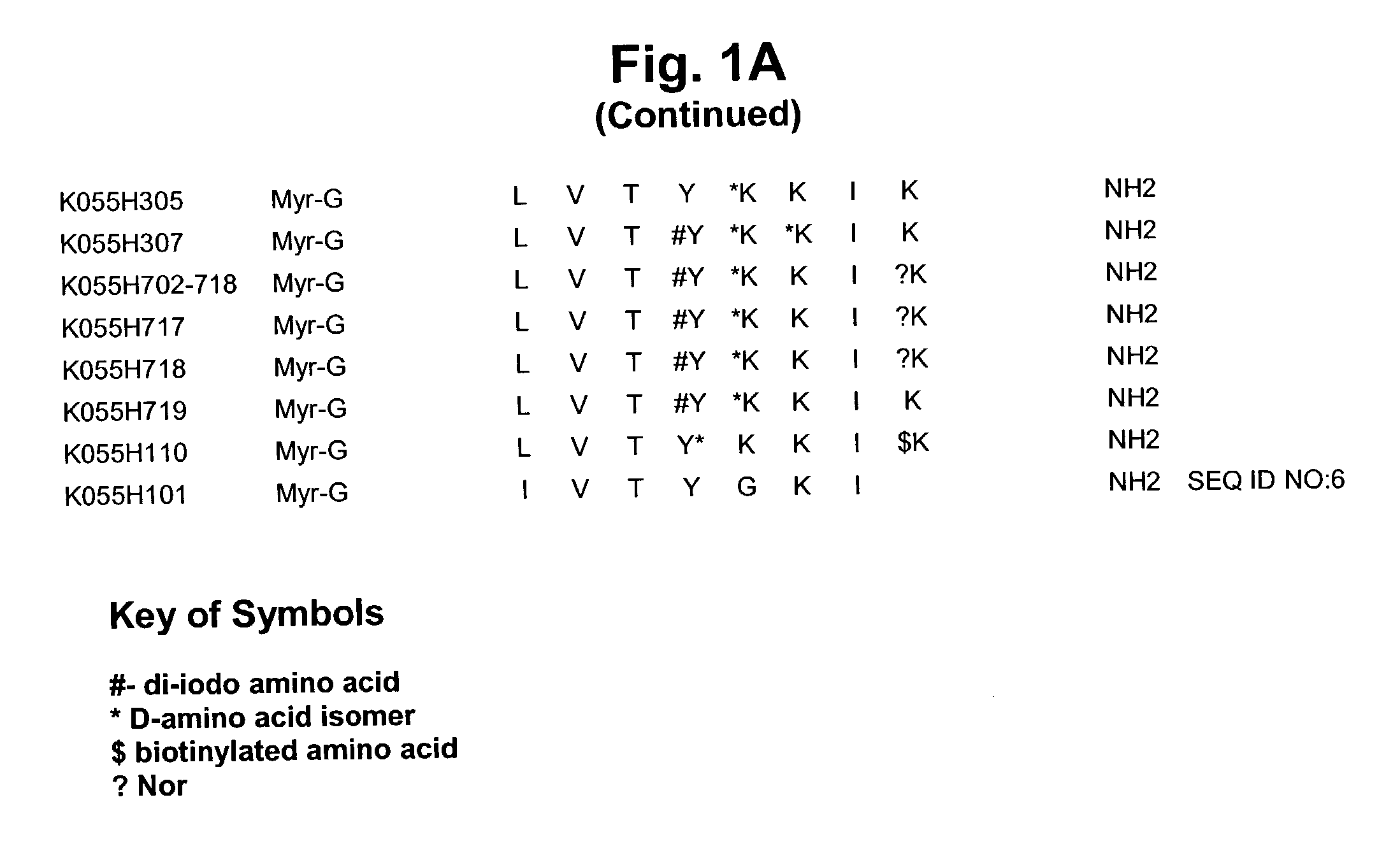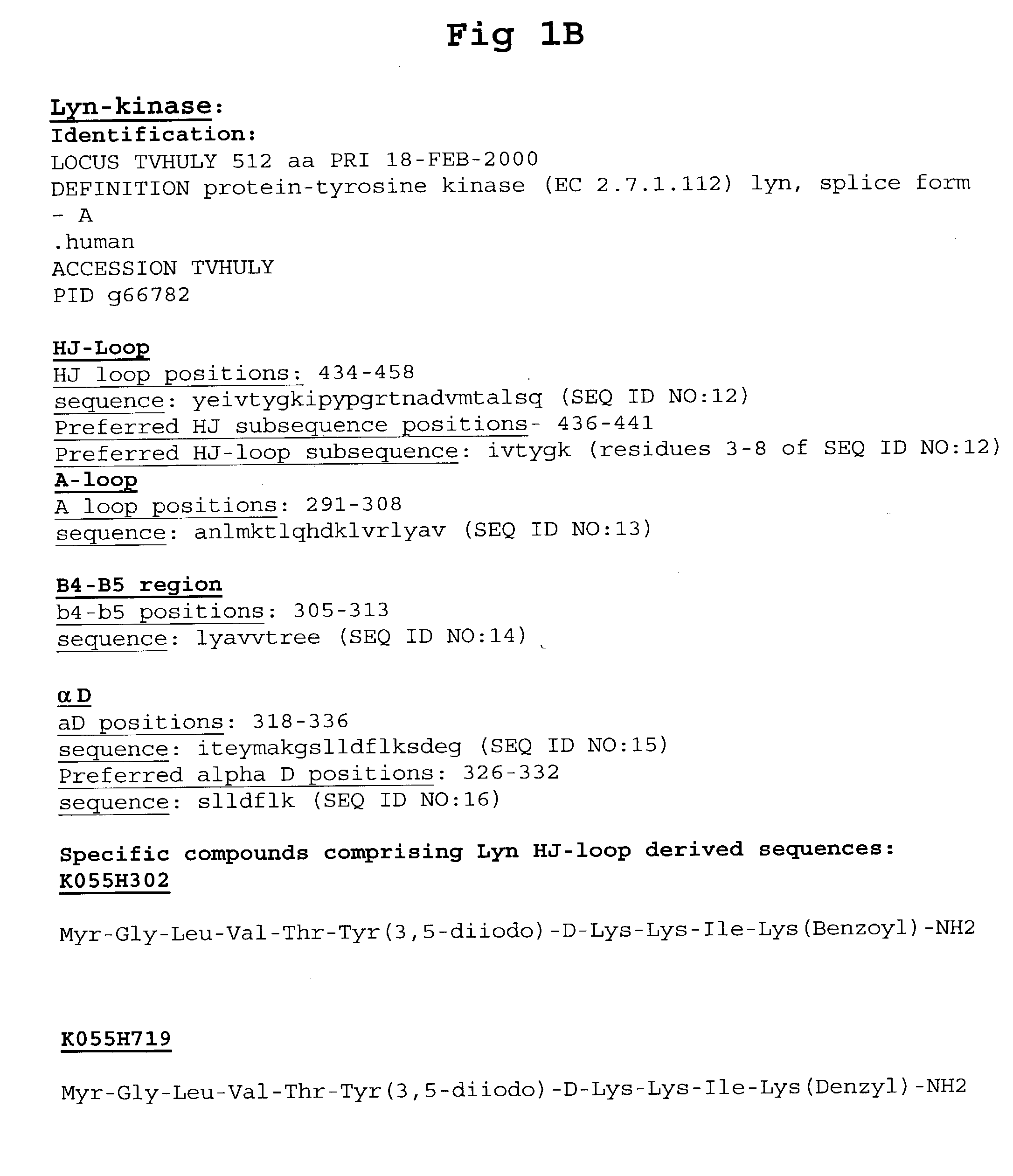Treatment of cancer
a cancer cell and growth factor technology, applied in the field of cancer treatment, can solve the problems of reducing the growth of cancer cells, and achieve the effects of decreasing charge, increasing resistance to degradation, and retaining steric properties
- Summary
- Abstract
- Description
- Claims
- Application Information
AI Technical Summary
Benefits of technology
Problems solved by technology
Method used
Image
Examples
example 2
Inhibition of Proliferation of Tumor Cells Obtained From by Incubation with Compounds Comprising Lyn-Derived Peptides
[0257] The following Human solid tumors cell lines: MCF7 (human breast cancer), EMT ((mouse breast cancer), MDA231 (human breast cancer), 1063 (ovary cancer), HEC-1A (endometrium cancer) HS703T (colon cancer), Colo205 (colon cancer) EMT (breast cancer mouse), all dissolved in formulation MiriB (see bellow) C6 (glioma) NIC H727 (dissolved in AMI 47) and NIC H727(dissolved in AMI 159-both being lung cancer, 293 cells (kidney epithelial cells) were obtained from the American Type Culture Collection. These cell lines were grown in RPMI 1640 medium supplemented with penicillin (100 U / ml), streptomycin (100 .mu.g / ml), glutamine (2 mM) and 10% endotoxin free bovine cell serum (Hyclone).
[0258] A suspension of the cells at 2.times.10.sup.4 cells / ml was prepared in the above described culture mediums and distributed 0.180 ml per well (about 4000 cells / well) in the wells of 96 w...
example 3
Preparation Formulations
[0263] 3A: B-blac Formulation
[0264] 15 mg of the compound were dissolved in 0.25 ml of 4% benzyl alcohol, 4% Pluronic L44 (BASF, Mount Olive, N.J.) and 2% benzyl benzoate in propylene glycol. To this, 0.125 ml of 2.2% glycine in DDW and 0.125 ml of 50 mM sodium bicarbonate were added while vigorously stirring the tube. The preparation was heated to 100.degree. C. for 15 min., then homogenized with Polytron (Kinematica, Luzan, Switzerland) for 2' during which 0.5 ml of 0.3 M lactose were gradually added.
[0265] The sequence of heating and homogenizing was repeated once again and after that the preparation was sterilized by heating to 100.degree. C. for 30 min.
[0266] 3B: MiriB Formulation:
[0267] 10 mg compound were dissolved in 0.5 ml of 4% benzyl alcohol and 4% Pluronic PE6200 (BASF, Mount Olive, N.J.) in propylene glycol. To this, 0.25 ml of 2.2% glycine in DDW and 0.25 ml of 50 mM sodium bicarbonate buffer (pH=7.5) were added while vigorously stirring the tub...
example 4
Change of Phosphorylation of Substrates
[0273] Experimental: cell lymphocytes cell line WEHI-231 was used. 5.times.10.sup.6 WEHI-231 cells / sample were washed with serum-free RPMI media (cells were spun at 1700 rpm for 5 min. at 4.degree. C.). The cells were suspended in serum-free RPMI media at 2.times.10.sup.7 cells / ml, and lysed by addition of an equal volume cold 2.times.LB (80 mM Tris pH 7.5, 2% NP-40, 1% DOC, 0.2 SDS, 50 mM NaPPi, 100 mM NaF, 2 mM Na.sub.3VO.sub.4, protease inhibitor mix) on ice for 15 min. The resulting mixture was spun for 20 min. 17,000 rpm at 4.degree. C. and supernatantly the cell extract was saved.
[0274] Immuno-precipitation (IP) of each target-protein was done in one batch: to the cell extract 2 .mu.g of appropriate Ab / reaction were added and then cells were rotated o / n on at 4.degree. C. 30 .mu.l 50% of slurry sample of protein A / G beads (prewashed 3 times with cold 1.times.LB) were again added for 3 hr at 4.degree. C. The IP complex was washed (.times.2...
PUM
| Property | Measurement | Unit |
|---|---|---|
| Fraction | aaaaa | aaaaa |
| Fraction | aaaaa | aaaaa |
| Fraction | aaaaa | aaaaa |
Abstract
Description
Claims
Application Information
 Login to View More
Login to View More - R&D
- Intellectual Property
- Life Sciences
- Materials
- Tech Scout
- Unparalleled Data Quality
- Higher Quality Content
- 60% Fewer Hallucinations
Browse by: Latest US Patents, China's latest patents, Technical Efficacy Thesaurus, Application Domain, Technology Topic, Popular Technical Reports.
© 2025 PatSnap. All rights reserved.Legal|Privacy policy|Modern Slavery Act Transparency Statement|Sitemap|About US| Contact US: help@patsnap.com



